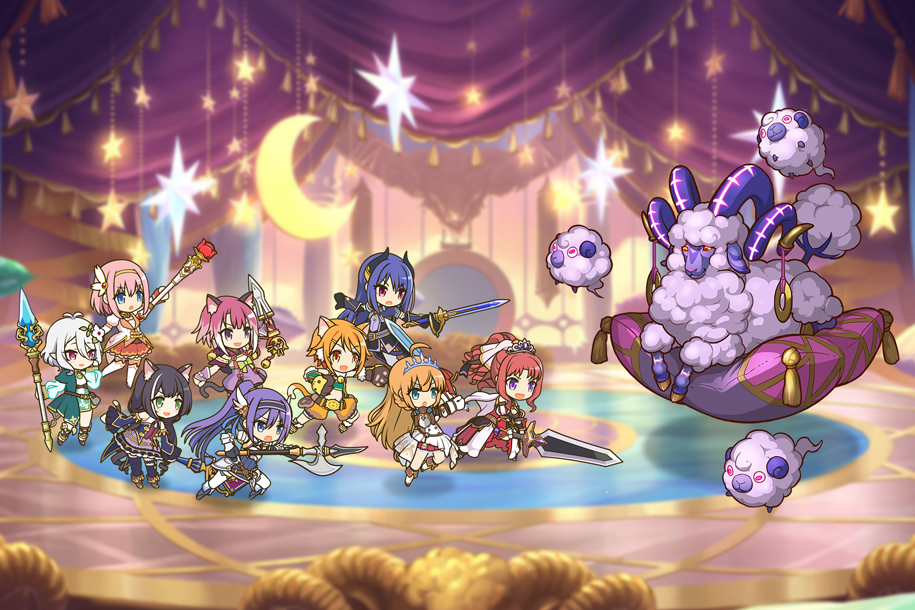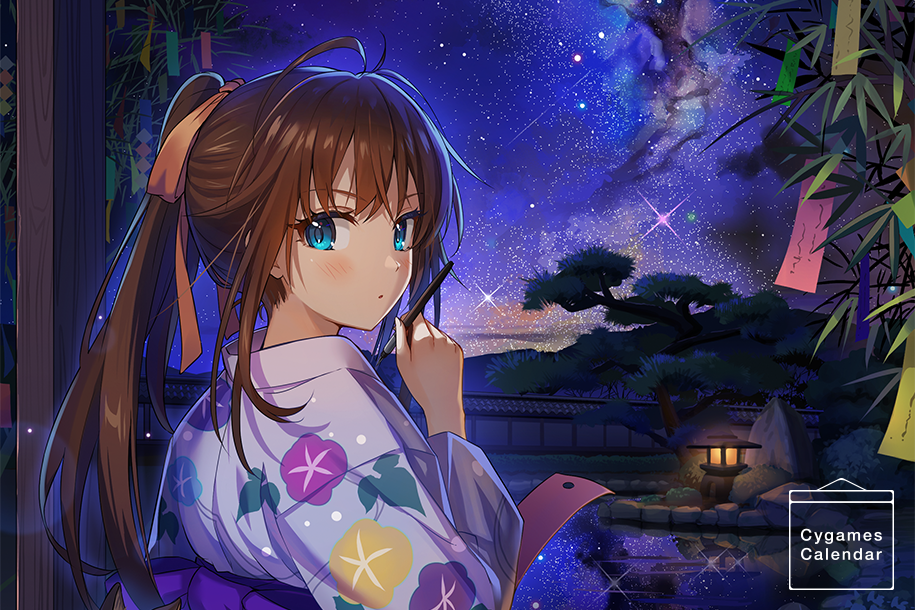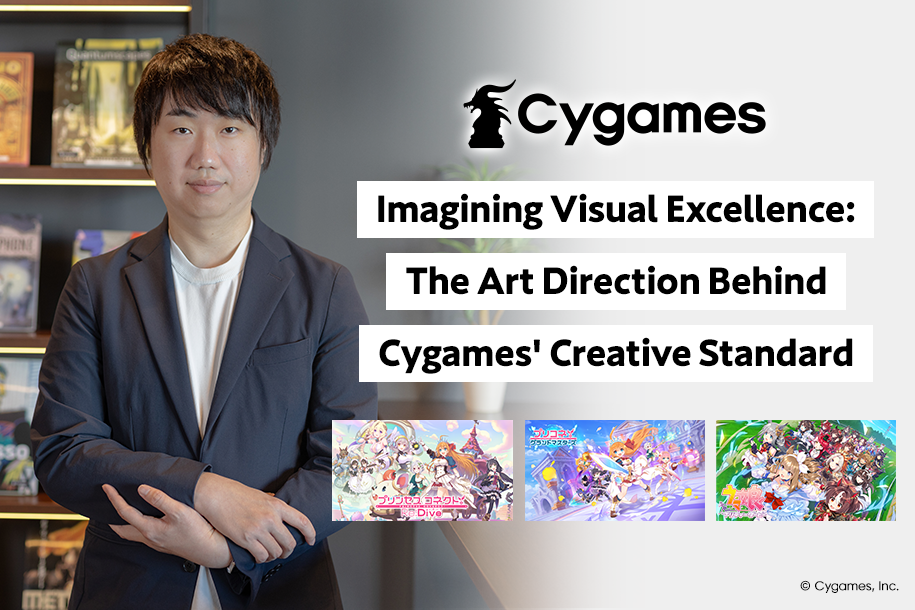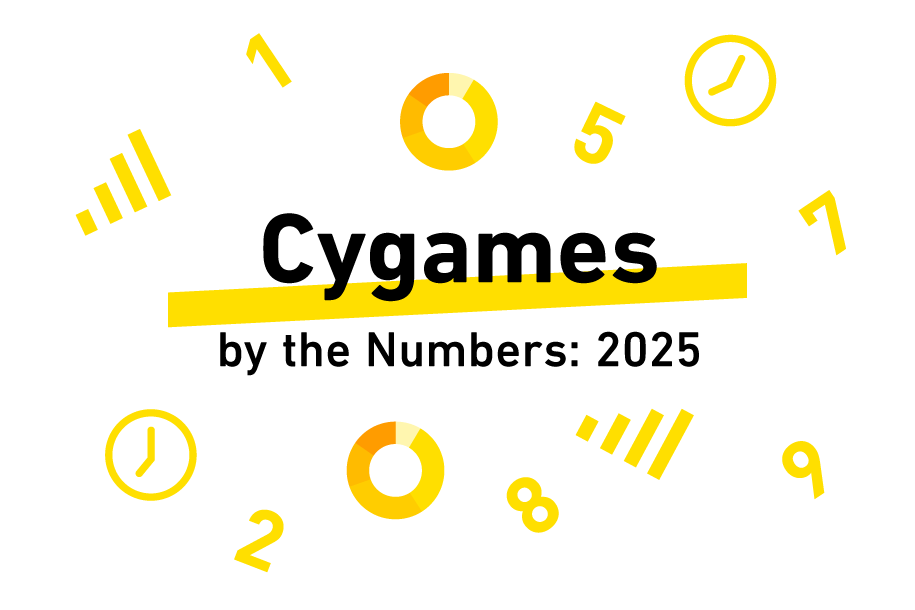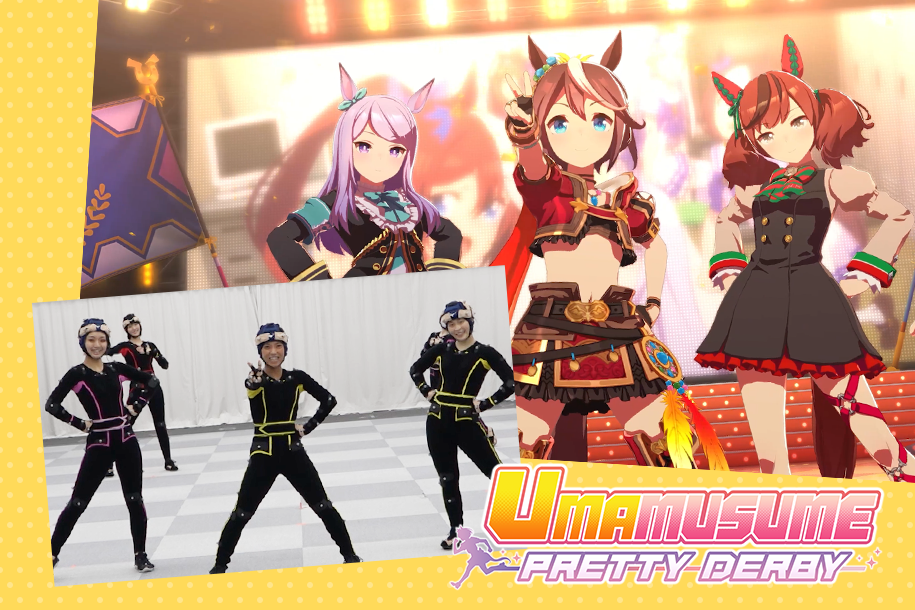Celebrating Shadowverse’s 4th Birthday! How Shadowverse’s Storyline Enriches the Game and how the Scenario Team comes up with their Ideas

On June 17, Shadowverse celebrated its fourth anniversary since launch. We asked producer Yuito Kimura and Rintaro Isozaki from the scenario team about the game’s unique world, the importance of storytelling in card games, and how they come up with their ideas.
- Producer, ShadowverseYuito Kimura

- After obtaining a graduate degree from the University of Tokyo, Yuito Kimura worked in various companies before founding Cygames with Koichi Watanabe in 2011. Kimura has produced such games as Granblue Fantasy, Shadowverse and Princess Connect! Re: Dive. He assumed the role of Executive Director in April 2019, and has been actively involved with game development as producer of all of Cygames’ main titles.
- Scenario Director, ShadowverseRintaro Isozaki
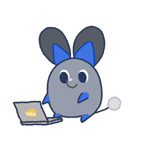
- Rintaro Isozaki joined the Cygames scenario team in 2015, writing story events for Rage of Bahamut. In 2016 he joined the Shadowverse development team and was in charge of writing the main story from Chapter 9 onward. Now in his capacity as the Scenario Director, Isozaki spearheads all creative aspects of Shadowverse’s IP and oversees its world setting.
Card games “allow us to confront our inner selves.”
Shadowverse’s origin story
A lot of cards from Rage of Bahamut also appear in Shadowverse, yet it’s clear that the game’s main story has an original and captivating plot. What plans did you have for the game’s story during its inception?
Kimura: Rage of Bahamut is an RPG card game, whereas Shadowverse is a digital card game, so the story doesn’t really affect gameplay. But if there’s no context behind card text and effects, they’re just a bunch of boring words. I saw the necessity of creating that background and decided to give the game a new story.
Isozaki: Stories are important from the perspective of releasing new card sets as well. If a card game is out for 10, 20 years, you’re going to end up running out of ideas, releasing the same kinds of cards… We believe that a story is essential for creating a well-loved, long-running card game.
When creating the story for Shadowverse, the writing team aims to make it something you’ve “seen before, but never tasted.” It should feel new and different without being intimidating. That’s our ideal for Shadowverse’s story.
Could you tell us in detail about how the main story came to be?
Kimura: It started with me talking about how we needed a story for each of the eight class leaders. Since they’re all equally important, we ended up with a multi-protagonist storyline.
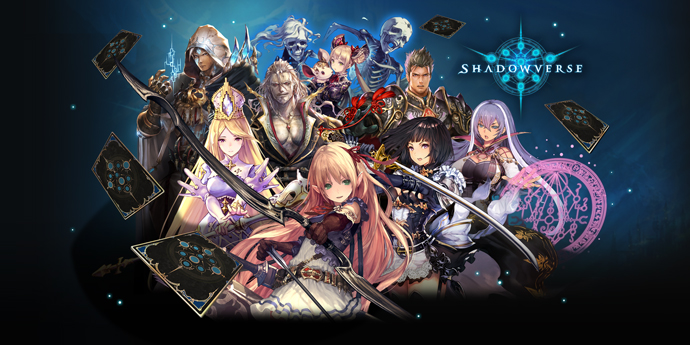
The word Shadowverse is a combination of “shadow” and “universe”. And card games involve controlling your emotions; every play you make ends up coming back to you in some way. In both of these senses, the game allows us to confront our inner selves and interact with our inner worlds.
The concept of having each of the characters face their inner demons is what led to the idea for The Morning Star story arc. While the eight start off as individuals on separate paths, their stories overlap in places, and they gradually come to work together in order to rise against the keepers. We planned this from the very beginning.
In the Guild War arc that followed, the story is set in Isunia, which is governed by five guilds, and it is the interactions between these guilds that progress the story. Mr. Isozaki, what were your intentions when writing this story?
Isozaki: For one thing, in order to further explore each of the characters, I wanted to rethink the way we write Shadowverse’s story. That’s why I chose Isunia, a place with a fantasy feel similar to that of The Morning Star. I also decided to highlight the protagonists using their relationships with other characters.
So in contrast to theme of the earlier stages of the game, where you had the protagonists confront their inner selves, in the Guild War arc you placed a lot more emphasis on the characters’ relationships with those around them.
Isozaki: Yes. The same is true for the Gears of Rebellion arc, which focused on humans and machines; the Seeds of Conflict arc, which explored the relationship between people and nature; and the Invasion of the Worldreaver arc, which linked them both together.
As the story continues, more characters appear, relationships are formed between them, and the story itself gains complexity. Are there any scenes or characters that have left a particularly strong impression on you?
Kimura: Personally, I feel like there have been a lot of impressive scenes where character duos have been formed. Isabelle and Eleanor, Luna and Aenea, Mono and Urias… even Luna and Nicola.
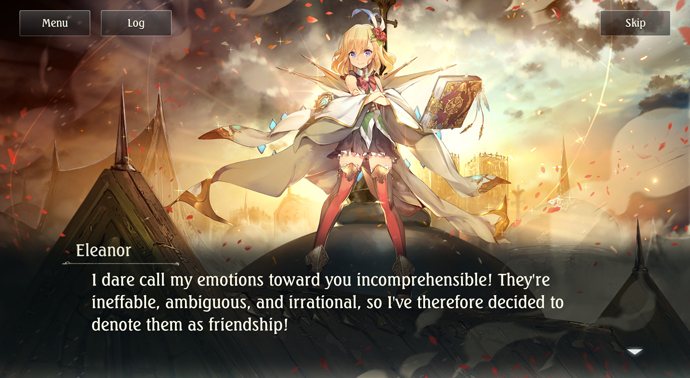
Isozaki: I’m attached to all of the characters, but if I had to name just one… Belphomet, who first appeared in Gears of Rebellion. We were already planning the Invasion of the Worldreaver arc, so we wanted him to be a character who the players would want to take down, but also someone with whom they could kind of sympathize.
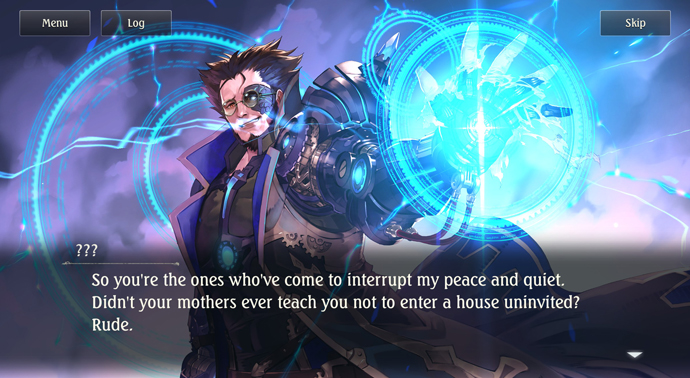
“Heart” was one of the primary themes of the Invasion of the Worldreaver arc. The depiction of Belphomet was crucial in getting that to work, wasn’t it?
Isozaki: Very much so. Belphomet is a character who denies his own heart, but is also ruled by it. He featured prominently in the story as a symbol of humanity.
Creating an expansive world
Linking each card with the story
It’s clear that a lot of detailed planning goes into writing for the main story, and it makes me wonder if the writing team hasn’t also contributed to the card game portion of Shadowverse as well. Mr. Isozaki, what is your and the scenario team’s role in regards to contributing to the card game side of things?
Isozaki: The scenario team doesn’t just write the main story and the flavor text on the cards. We handle everything from designing the themes for each card pack, to creating the card lineup; from managing the illustrations, to creating promotional videos and narration. We work in conjunction with other departments too.
What sort of process do you go through when designing cards?
Isozaki: We’re lucky in that the TCG Planning Team always takes our work on the lineup into consideration, so the writing team rarely has anything to say about card effects, and things just proceed smoothly. If we interfered too much, the game wouldn’t be balanced, and our priority is to make a fun card game.
Kimura: I look at the big picture. If I find any disparities between the different teams’ work, or if any character effects or relationships on the cards stand out as odd, I find a way to balance them out. My focus isn’t just on what’s right logically, but also on how these kinds of details might make the player feel.
For example, Bayleon and Valdain from the Seeds of Conflict story arc are supposed to be brothers and rivals, so I thought their card stats (attack, defense, and cost) should also be equal.
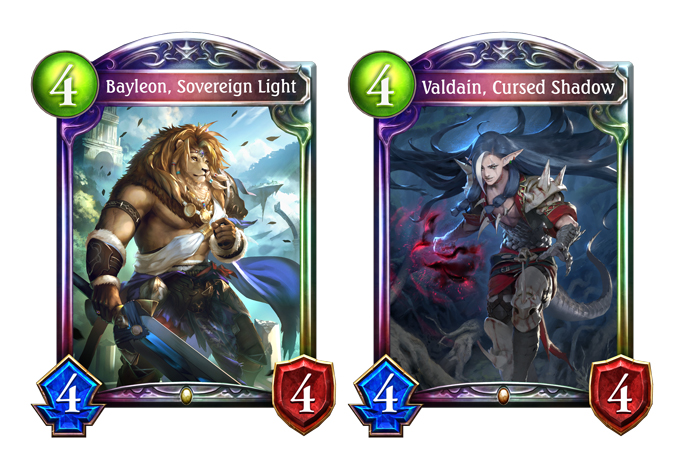
Could you tell us some memorable examples of card effects and flavor text? Why don’t we start with effects?
Isozaki: The first card that comes to mind is the Runecraft card Prophetess of Creation. In order to play it, you need to play cards that each originally cost from 1 to 10, so it feels like a prophecy slowly coming to fruition. I think we really captured the theme well there.
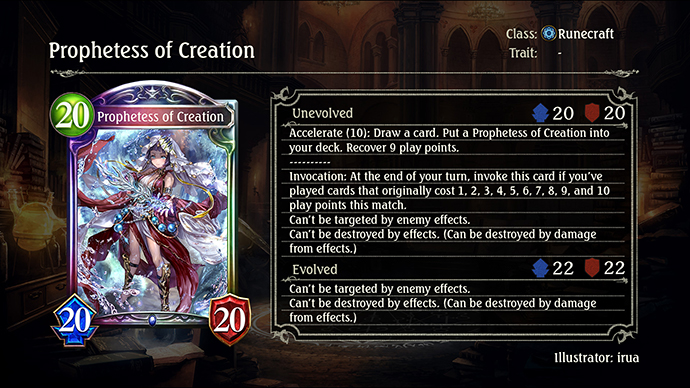
Isozaki: The Neutral card Hamsa is also quite memorable. In Rage of Bahamut, Hamsa was like a mirror who could reflect the heart of another. Because of this, we’ve given him the effect of reflecting the enemy’s attack stat.
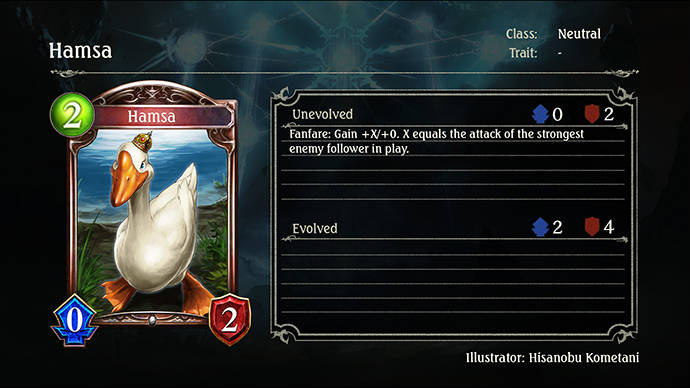
How about flavor text?
Isozaki: When it comes to flavor text, we spend a lot of time trying to make every single card lovable. We write every card hoping that it might become the centerpiece of the entire set, so it’s hard to choose just one as a favorite…
The Swordcraft card Council of Card Knights shows three knights with the text, “They say the diamonds fellow slipped up and got his head chopped off.” There must be a lot of cards that are greatly impacted by their flavor text.
Isozaki: The art for Council of Card Knights was actually supposed to have four knights on it, but ended up only coming with three, so we had to change the flavor text (laughs). Replacing the card would have affected the balance of the game, so we used the flavor text to our advantage, poking fun at the mistake.
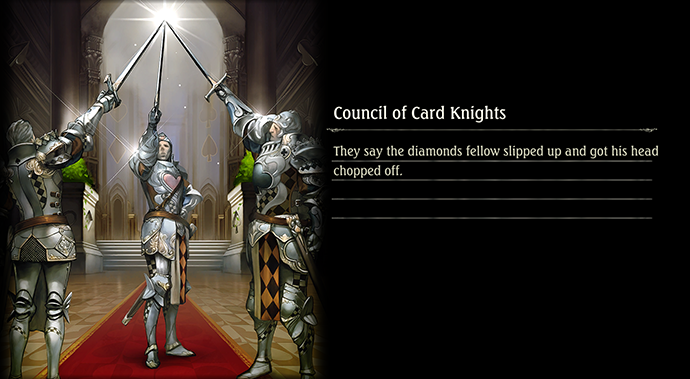
Isozaki: Since the twelfth set, Steel Rebellion, we’ve been weaving stories into the cards of each class.
For instance, in the fifteenth set, Ultimate Colosseum, the Havencraft card Wilbert, Grand Knight gives you not only the story of the world Wilbert lives in, but information about him and the Eclair Holy Knights he fights alongside as well. We make sure to only give out hints, however.
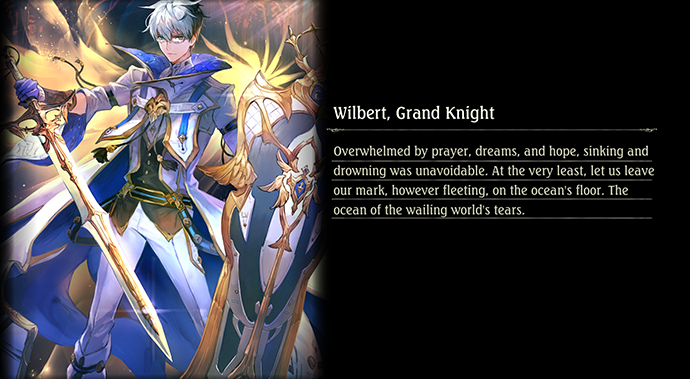
You mean there’s more to the text than meets the eye?
Isozaki: We have to create much more than what the players see on the card to keep the world from feeling limited, and we try to write flavor text in a way that will get their imaginations going. We really want to get players to ask questions and guess about the world, and there are no right or wrong answers.
In the first three sets we didn’t quite have the flavor text process down, but I think the Shadowcraft card Death’s Breath, which summons 3 zombies, is a good example. The text really captures the theme: “Look, there’s your mother on the right, then your father, and then your little brother on the left. Wait, or was it the other way around?”
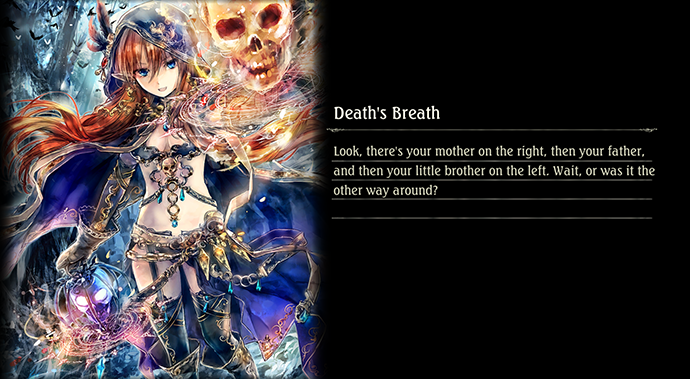
From TV anime to console game
The ever-expanding Shadowverse story
Shadowverse has been expanding its story with the TV anime as well, hasn’t it? I noticed that the show has quite a different feeling than the game, focusing on a group of children who play Shadowverse.
Kimura: We felt that there were two possibilities when planning the anime. We could either tell the story of children who play Shadowverse, or tell the story that is found within the game. We went with the former in order to introduce Shadowverse to a wider audience.
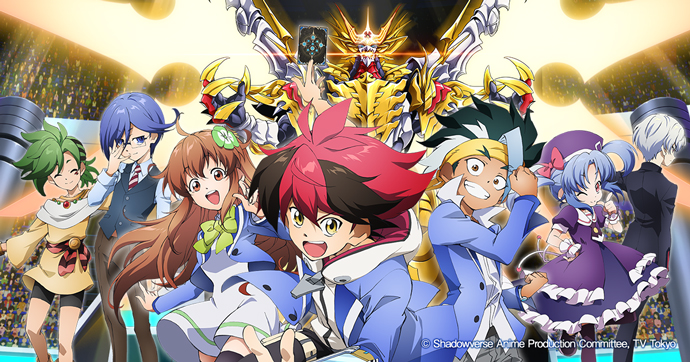
Isozaki: Given that it’s a children’s anime that airs in the evening, we decided we didn’t want to stray too much from the norm while writing the script. The anime tells a very different story from the game, but there are points they have in common. Just like in the game, we treat all seven of the main characters as protagonists.
Kimura: Card games are played by human beings and are all about communication. Instead of making an anime just to promote the game, we wanted to explore the characters’ inner selves and the concept of humanity in general. I hope people will enjoy seeing the fun effects of the cards in the anime.
Shadowverse celebrated its fourth anniversary in June. Do you have any thoughts about the future of the series?
Kimura: One thing I can say is that we’d like to make content for people of all ages and types. For example, we’d like to make Shadowverse something that parents can enjoy with their children.
Isozaki: I love our characters, so I want them to be happy, and I’d like to create more opportunities for players fall in love with them too. Also, card games aren’t just competitive; part of the fun is in collecting the cards. I hope we can provide a lot of different ways for people to enjoy Shadowverse.
Kimura: Shadowverse is in its fourth year thanks to the support of all our fans. Following on from the TV anime, Cygames is planning to release its first game on the Nintendo Switch, Shadowverse: Champion’s Battle, in 2020. We hope everyone continues to enjoy Shadowverse as it evolves.



